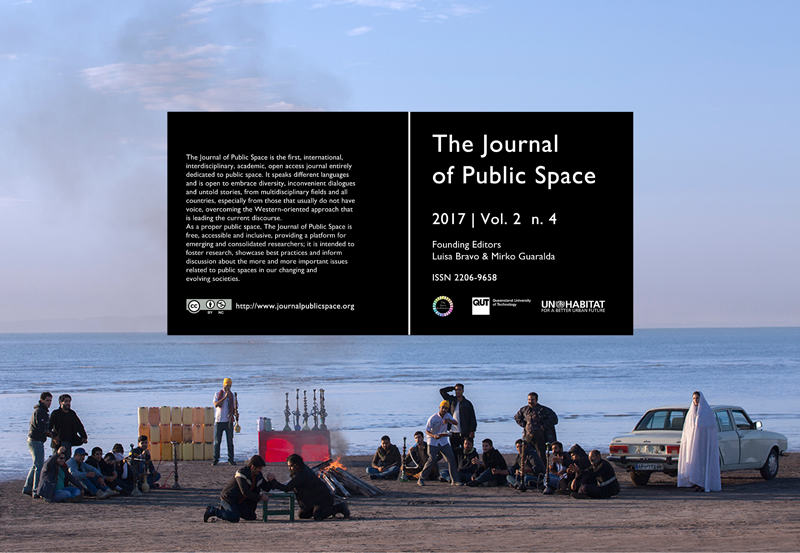The Nineteenth Century American Promenade. Precedent and Form
##plugins.themes.bootstrap3.article.main##
Abstract
The promenade became firmly established in Europe as a public space type in the seventeenth and eighteenth centuries, appearing on the North American continent in the late eighteenth century. By the mid-nineteenth century a number of American cities offered designated outdoor settings for citizens to engage the social practice of “seeing and being seen”, in locations as diverse as cemeteries, fashionable streets, waterfront embankments, resort beachfronts, and later, in urban parks and along parkways. These public spaces attracted diverse populations, from working and middle classes to social elites, fulfilling a range of social and recreational goals in a variety of contexts. The promenade has endured as a highly popular public space type over many generations and across diverse cultural and geographic contexts, prompting the question whether there are certain formal qualities that have enhanced the success of the promenade as a public space? Are there are particular physical and spatial conditions that have persisted, contributing to its capacity to endure?
This paper describes the evolution of urban promenades in Western Europe and in the United States from the sixteenth to nineteenth centuries, before applying typological analysis to a set of promenade precedents drawn from several countries and across a span of several hundred years. The analysis reveals that factors such as location, connectivity, adjacency, alignment, dimensions, scale, and amenity features have contributed to the qualities of accessibility, activity, and comfort that have attracted people to promenades and supported their popularity over time. The paper concludes that nineteenth century American promenades were legitimate successors to earlier European precedents, exhibiting similarities in physical and spatial attributes that place them squarely within a typological tradition.
##plugins.themes.bootstrap3.article.details##
The Authors retain copyright for articles published in The Journal of Public Space, with first publication rights granted to the journal.
Articles in this journal are published under the Creative Commons Attribution NonCommercial Licence (CC-BY-NC) - https://creativecommons.org/licenses/by-nc/4.0/.
You are free to:
• Share - copy and redistribute the material in any medium or format
• Adapt - remix, transform, and build upon the material
Under the following terms:
• Attribution - You must give appropriate credit, provide a link to the license, and indicate if changes were made. You may do so in any reasonable manner, but not in any way that suggests the licensor endorses you or your use.
• NonCommercial — You may not use the material for commercial purposes.
References
Bluestone, D. M. (1987). From promenade to park: The gregarious origins of Brooklyn's Park Movement, American Quarterly, 39(4), 529-550.
Cleary, Richard (2002). Making breathing room: Public gardens and city planning in eighteenth century France, in Hunt, J. D., Conan, M., & Goldstein, C. Tradition and innovation in French garden art: Chapters of a new history. Philadelphia: University of Pennsylvania Press.
Corbusier L, Etchells F. The city of tomorrow and its planning. London: J. Rodker; 1929.
Darin, Michael (2000). French belt boulevards. Urban Morphology, 4(1), 3-8.
Domosh, M. (1996). Invented cities: The creation of landscape in nineteenth-century New York & Boston. New Haven: Yale University Press.
Domosh, Mona (1998). Those ‘gorgeous incongruities’: Polite politics and public space on the streets of New York City. Annals of the Association of American Geographers, 88(2), 209–226.
Girouard, M. (1985). Cities & people: A social and architectural history. New Haven: Yale University Press.
Kostof, Spiro (1991). The city shaped: Urban patterns and meanings through history. London: Thames and Hudson.
Larkham, P. J. (2000). Promenades in English towns. Urban Morphology, 4(2), 106-106.
Lawrence, H. W. (1988). Origins of the tree-lined boulevard. Geographical Review, 78(4), 355-374.
Macdonald, E. (2012). Pleasure drives and promenades: The history of Frederick Law Olmsted's Brooklyn parkways. Chicago, Ill: Center for American Places at Columbia College.
Malone, P. M., & Parrott, C. A. (1998). Greenways in the industrial city: Parks and promenades along the Lowell canals. IA. The Journal of the Society for Industrial Archeology, 19-40.
Moudon, Anne Vernez (1987). The research component of typomorphological studies. AIA/ACSA Research Conference Proceeding. Boston.
Olmsted, Frederick Law Sr. (1875). Report on a promenade. New York City Department of Public Parks, Document No. 67. Reprinted in Olmsted, Frederick Law Jr. and Theodora Kimball eds. (1973). Forty years of landscape architecture: Central Park, Cambridge: MIT Press.
Rabreau, Daniel (1991). Urban walks in France in the seventeenth and eighteenth centuries, in Mosser, Monique & Georges Teyssot, eds. The architecture of western gardens: A design history from the renaissance to the present day. Cambridge, Mass: MIT Press.
Reps, John W. (1991) Washington on view: The nation’s capital since 1790. Chapel Hill: University of North Carolina Press.
Rogers, Elizabeth B. (2001) Landscape design: a cultural and architectural history. New York: Abrams.
Scobey, D. (1992). Anatomy of the promenade: The politics of bourgeois sociability in nineteenth-century New York. Social History, 17(2), 203-227.

